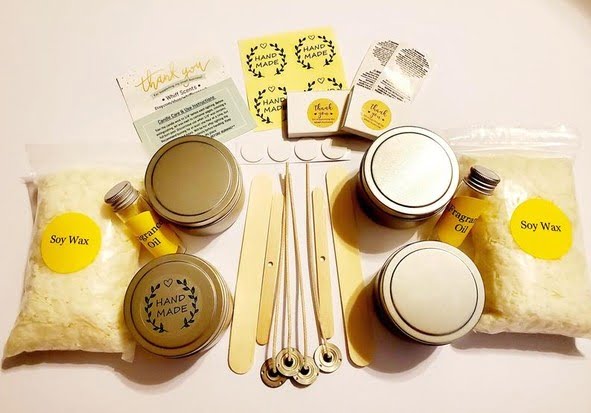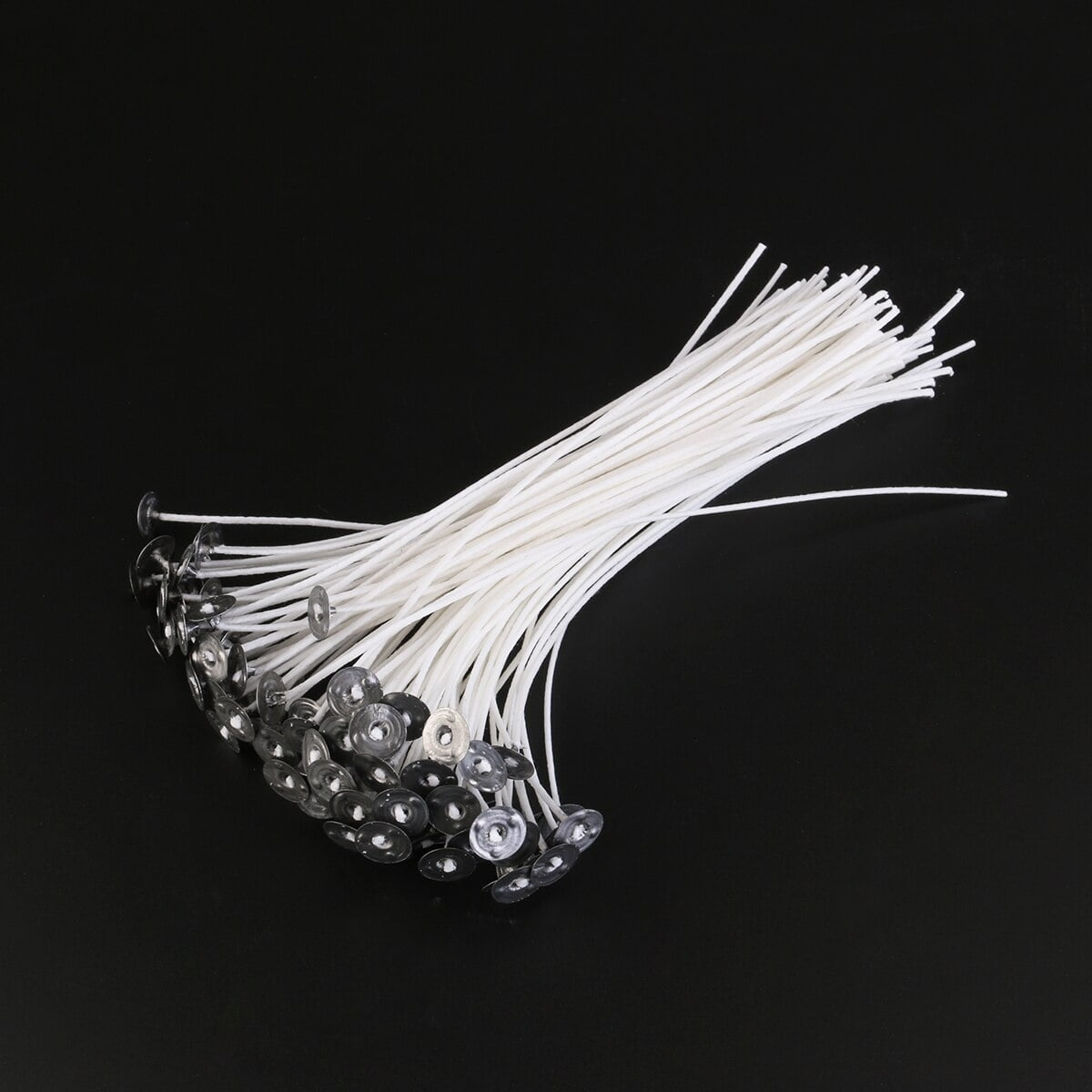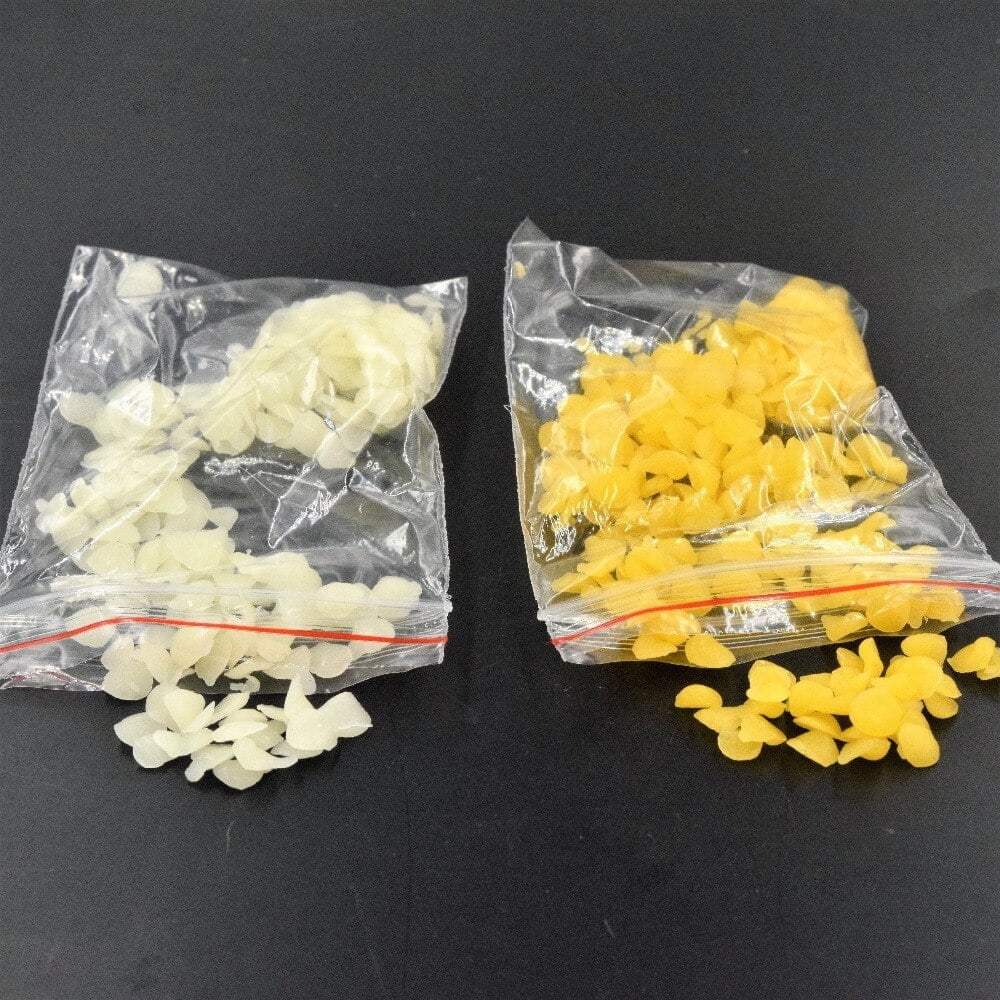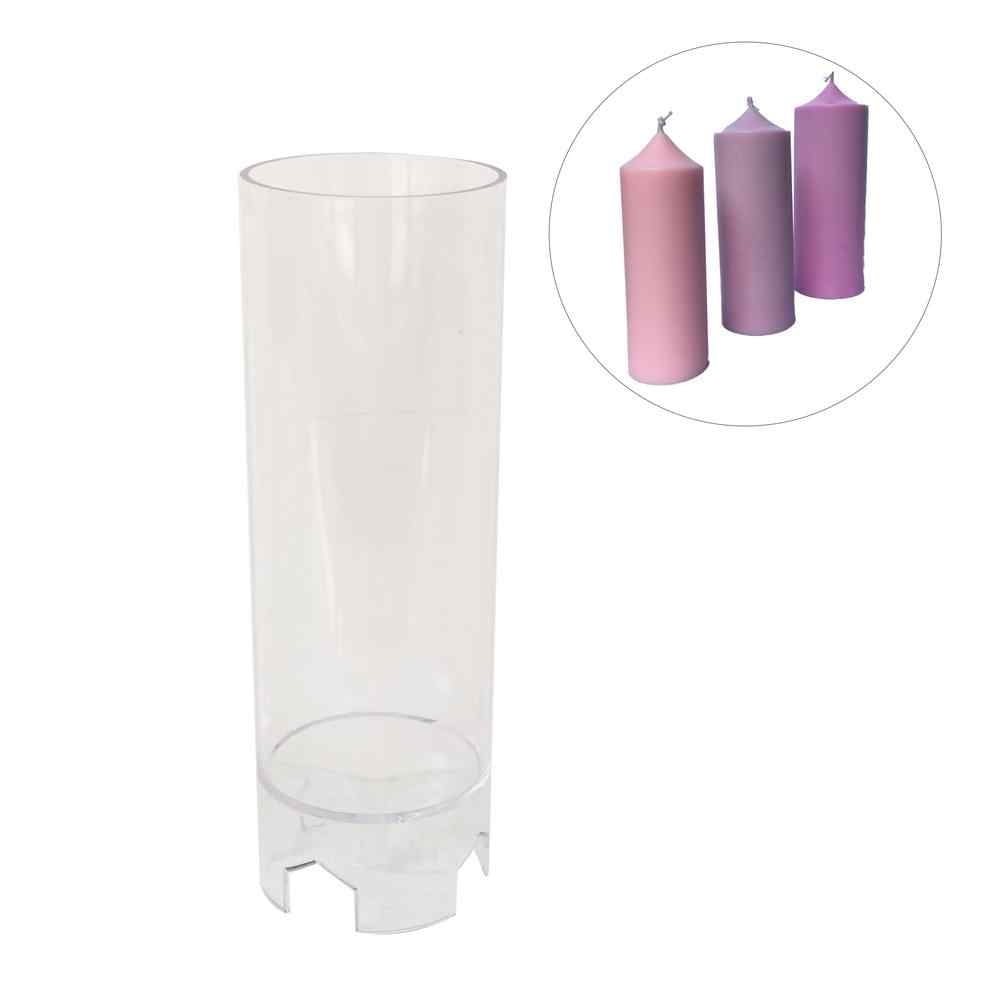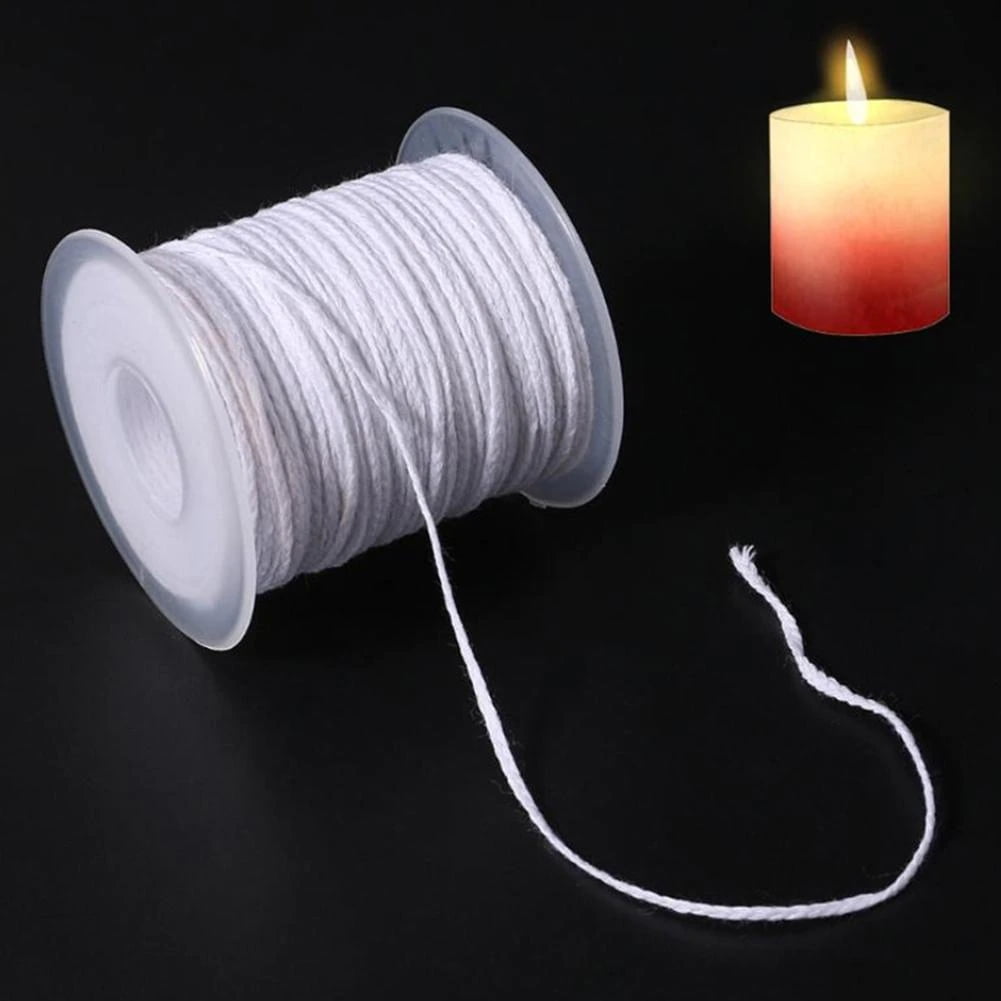Are you looking to add a touch of aromatherapy to your homemade candles? If so, you may be wondering if it’s possible to use Doterra essential oils in candle making. In this article, we will dive into the world of Doterra oils and explore their potential in creating beautifully scented candles.
Doterra oils are renowned for their purity and therapeutic properties. They are extracted from plants through a meticulous process that ensures the retention of all the natural benefits. From lavender and eucalyptus to peppermint and lemon, these essential oils have been used for centuries for their calming, invigorating, and healing effects.
Candle making is an art that allows individuals to express their creativity while also enjoying the soothing ambiance of flickering candlelight. Whether you’re a beginner or experienced candle maker, incorporating essential oils can elevate your crafts to new heights. Not only do they infuse your candles with delightful scents but they also have the power to enhance mood, reduce stress, and promote relaxation.
In this comprehensive guide, we will delve into everything you need to know about using Doterra essential oils in candle making. From understanding the compatibility between oils and wax to selecting the best oils for different types of candles, we will walk you through each step of the process. Additionally, we’ll provide safety measures, mixing instructions, fragrance combination ideas, expert tips, and answers to frequently asked questions.
Get ready to embark on a fragrant journey as we uncover the wonders of Doterra essential oils in candle making. Let’s explore how these precious plant extracts can turn your home into a paradise of captivating scents and peaceful serenity.
What are Doterra Oils
Doterra oils, also known as Doterra essential oils, are high-quality and pure essential oils extracted from various plants. These oils are carefully harvested and distilled to ensure their therapeutic properties are preserved. Doterra oils have gained popularity in the world of aromatherapy and natural remedies due to their numerous benefits.
One of the primary benefits of Doterra oils is their ability to promote physical and emotional well-being. Each oil has its own unique aroma and chemical composition, which can have a different effect on the body and mind. For example, lavender oil is known for its calming properties and is often used to relieve stress and promote relaxation, while peppermint oil is invigorating and commonly used for its energizing effects.
In addition to their aromatic qualities, Doterra oils also possess a range of therapeutic properties. They can have antiseptic, anti-inflammatory, antimicrobial, or analgesic properties, among others. This makes them useful in addressing various health concerns or simply enhancing overall well-being.
When it comes to candle making, Doterra oils offer an exciting opportunity to infuse your homemade candles with delightful scents that provide both visual beauty and aromatherapeutic benefits. By combining the art of candle making with the aromatic power of essential oils, you can create candles that not only add ambiance to your space but also provide soothing aromas that can uplift mood or promote relaxation.
Using Doterra oils in candle making allows you to customize the scent according to your preferences or the intended purpose of the candle. Whether you want a bright citrus scent for a refreshing atmosphere or a warm vanilla scent for a cozy ambiance, there’s a Doterra oil that can complement your desired fragrance profile.
In summary, Doterra oils are pure essential oils extracted from various plants with unique aromatic qualities and therapeutic properties. They offer an excellent opportunity to enhance your candle making experience by infusing homemade candles with pleasant scents that can promote physical and emotional well-being. In the next section, we will delve into the art of candle making and explore how to properly incorporate Doterra oils into your candle wax.
The Art of Candle Making
The art of candle making is a popular and enjoyable hobby for many people. Making homemade candles allows individuals to express their creativity, customize scents, and create personalized gifts. This section will serve as a beginner’s guide to making homemade candles, providing step-by-step instructions and tips for success.
Before diving into the candle making process, it is important to gather all the necessary materials and equipment. This includes candle wax (such as soy wax or beeswax), wicks, containers or molds, a double boiler or melting pot, a thermometer, fragrance oils or essential oils (such as Doterra oils), coloring agents (if desired), and any additional decorations or embellishments.
Once you have gathered your materials, it’s time to start creating your candles. The first step is to melt the candle wax using a double boiler or melting pot. It is essential to heat the wax slowly and gently, ensuring that it does not overheat or surpass its recommended melting temperature.
After the wax has melted completely, it’s time to add fragrance oils or essential oils to create delightful scents for your candles. When using Doterra oils in candle making, it is important to note that not all essential oils are suitable for this purpose. Some may not produce a pleasant scent when burned or may have low compatibility with candle wax. Therefore, it is crucial to select high-quality essential oils specifically formulated for candle making.
To ensure proper measurement and fragrance balance in your candles, it is recommended to follow guidelines provided by the manufacturer or use a fragrance calculator. Generally, a safe guideline for adding essential oils would be 1 ounce of oil per pound of wax. However, this can vary depending on personal preference and desired scent intensity.
Overall, the art of candle making is a creative endeavor that can be enjoyed by beginners and experienced crafters alike. By following these step-by-step instructions and selecting the best Doterra oils for your candles, you can create beautifully scented homemade candles that add a touch of warmth and ambiance to any space.
| Materials | Equipment |
|---|---|
| Candle wax (such as soy wax or beeswax) | Double boiler or melting pot |
| Wicks | Thermometer |
| Fragrance oils or essential oils (such as Doterra oils) | Molds or containers |
| Coloring agents (if desired) | Additonal decorations or embellishments |
Understanding the Compatibility
Essential oils are highly concentrated plant extracts that can add fragrance and therapeutic benefits to homemade candles. When it comes to candle making, understanding the compatibility between essential oils and candle wax is crucial for creating a high-quality product.
The Science Behind Infusing Essential Oils in Candle Wax
The process of infusing essential oils into candle wax involves a scientific principle known as solubility. Candle wax, typically made from soy, beeswax, or paraffin, has its own solubility limits, which determine how much oil it can hold without compromising the integrity of the candle. When essential oils are mixed with melted wax, their molecules disperse evenly throughout the mixture, allowing the fragrance to be released when the candle is burned.
Choosing the Right Essential Oil for Your Candle
Not all essential oils are suitable for candle making, as some may not blend well with certain types of wax or have a strong enough scent throw. It is important to select essential oils that are compatible with your chosen candle wax and have a strong enough aroma to fill a room when the candle is burning.
Some popular Doterra oils that work well in candles include lavender, eucalyptus, lemon, peppermint, and chamomile. These oils not only provide delightful scents but also offer additional benefits such as relaxation or rejuvenation.
Factors to Consider When Combining Essential Oils with Candle Wax
There are several factors to consider when combining essential oils with candle wax to ensure compatibility and achieve desired results. The first factor is flashpoint – the temperature at which an oil ignites – which should be higher than the melting point of your chosen wax to avoid any safety hazards during burning.
Additionally, it is important to consider the amount of oil needed for each batch of candles. Typically, 1 ounce of essential oil per pound of wax provides a well-scented candle, but this can vary depending on personal preference and the strength of the oil’s aroma.
Lastly, be aware that some oils may affect the look or burn characteristics of the candle. For example, oils with a high viscosity can cause candles to produce more soot when burned, while certain oils may discolor or alter the appearance of the wax.
By understanding how essential oils can be infused with candle wax and considering compatibility factors, you can create beautifully scented candles that offer not only ambiance but potential therapeutic benefits as well. In the next section, we will explore selecting the best Doterra oils for candle making to help you get started on your own aromatic creations.
Selecting the Best Doterra Oils for Candle Making
Incorporating Doterra Oils into Candle Making
When it comes to candle making, the type of essential oil you choose can greatly influence the fragrance and overall aesthetic of your homemade candles. Doterra oils are known for their high quality and therapeutic properties, making them an excellent choice for adding a natural and soothing scent to your candles. In this section, we will explore some of the best Doterra oils that work well in candle making, allowing you to create unique and inviting scents.
Lavender Essential Oil
Lavender essential oil is a must-have for any candle maker. Its calming and relaxing aroma is perfect for creating a tranquil atmosphere in your home. When blended with soy or beeswax, lavender essential oil produces a subtle and floral scent that can promote better sleep and reduce stress. It also pairs well with other essential oils like bergamot or chamomile for a more complex fragrance profile.
Lemon Essential Oil
For those who prefer bright and invigorating scents, lemon essential oil is an excellent choice. Its fresh citrus aroma can energize any space and uplift the mood. Lemon essential oil can be mixed with soy wax or other citrus oils such as orange or grapefruit to create a zesty and refreshing fragrance that is perfect for summer or kitchen-themed candles.
Peppermint Essential Oil
If you’re looking to add a touch of minty freshness to your candles, peppermint essential oil is ideal. Its cooling scent can help relieve headaches and congestion while providing a burst of aromatherapy benefits. Peppermint essential oil blends well with eucalyptus or lavender for a spa-like experience, or it can be used on its own for a crisp and invigorating fragrance.
Whether you want to create candles that promote relaxation, energize the atmosphere, or provide a refreshing aroma, Doterra oils offer a wide range of options to choose from. These are just a few examples of the best essential oils for candle making, but there are countless other scents available to suit your preferences and crafting needs. Experimenting with different combinations will allow you to unleash your creativity and bring unique scents into your space.
Safety Measures
When using Doterra oils in candle making, it is important to prioritize safety to ensure a successful and hazard-free experience. Here are some essential precautions and guidelines to keep in mind:
Dilution
Essential oils are highly concentrated substances and should always be diluted before use. When adding Doterra oils to your candle wax, it is recommended to mix them with a carrier oil or another suitable medium, such as melted vegetable shortening or liquid glycerin. This helps to disperse the fragrance evenly throughout the wax and prevents potential irritations or sensitivities.
Testing
Before creating a large batch of candles, it is crucial to conduct small-scale tests first. This involves making a single candle using the intended fragrance combination and burning it for a few hours to assess its scent throw, burn stability, and overall performance. This will allow you to make any necessary adjustments before committing to a larger production.
Heat Resistance
Take note of the flashpoint of each essential oil being used. The flashpoint refers to the temperature at which an oil can ignite when exposed to an open flame or spark. It is important to select Doterra oils with higher flashpoints (above 130 °F) for candle making purposes, as this reduces the risk of accidents during the burning process.
Proper Ventilation
Ensure that you work in a well-ventilated area when handling essential oils. Open windows or use fans to promote air circulation and prevent the buildup of strong scents that may cause headaches or respiratory discomfort.
Storage Precautions
Store your essential oils properly in dark glass bottles away from direct sunlight or extreme temperatures. This will help preserve their potency and extend their shelf life.
By following these safety measures, you can enjoy the benefits of Doterra oils in your candle making projects while minimizing any potential risks. Remember to prioritize personal safety and responsible usage for a rewarding and enjoyable crafting experience.
Mixing and Measuring
Once you have selected the perfect Doterra essential oils for your candle making project, it’s time to learn how to properly combine them with candle wax. This step is crucial in ensuring that the fragrance is evenly distributed throughout the candle and that it produces a pleasing aroma when lit. Follow these step-by-step instructions to achieve the best results:
- Gather your materials: Before you begin, make sure you have all the necessary materials at hand. This includes your chosen Doterra oils, candle wax (such as soy wax or beeswax), a double boiler or melting pot, a thermometer, a stirring utensil (preferably stainless steel or heat-resistant glass), and candle molds or containers.
- Melt the wax: Begin by melting your candle wax in a double boiler or melting pot over medium-low heat. Keep an eye on the temperature using a thermometer and ensure that it doesn’t exceed the recommended melting point for your specific type of wax.
- Add the essential oils: Once the wax has completely melted, remove it from heat and allow it to cool slightly for a few minutes. Then, add your chosen Doterra essential oils to the melted wax. The general guideline is to use 1 ounce of essential oil per 1 pound of wax, but you can adjust this ratio according to personal preference and desired fragrance strength.
- Stir thoroughly: Using a stirring utensil, gently stir the mixture until the essential oils are well incorporated into the melted wax. Make sure to stir in one direction only to avoid introducing air bubbles into the mixture.
- Pour into molds or containers: Carefully pour the scented wax into your chosen candle molds or containers. Take care to avoid spilling or splashing any hot wax onto yourself or your surroundings.
- Allow cooling and setting: After pouring, let the candles cool and set undisturbed for at least 24 hours. This ensures that the fragrance and wax properly bond together, resulting in a better scent throw when the candle is burned.
Remember, it’s always important to follow safety precautions when handling hot wax and oils. Wear protective gloves or use a heat-resistant utensil to minimize the risk of burns. Additionally, be cautious not to exceed the recommended ratio of essential oil to wax, as using too much oil can cause performance issues such as poor burn quality or excessively clogged wicks.
With these step-by-step instructions, you can confidently mix and measure your Doterra oils with candle wax to create beautifully scented homemade candles. Enjoy experimenting with different essential oil combinations to find unique and captivating fragrances that elevate your candle making projects.
Experimenting with Fragrance Combinations
One of the most exciting aspects of using Doterra oils in candle making is the ability to create custom scents by blending different essential oils together. With a wide range of Doterra oils available, you have endless possibilities for creating unique fragrance combinations. Here are some creative ideas to inspire your experimentation:
- Floral Paradise: Combine a few drops of Doterra Lavender oil with Doterra Rose oil for a beautiful floral scent that promotes relaxation and calmness.
- Citrus Burst: Create an energizing and uplifting aroma by blending equal parts of Doterra Lemon oil, Doterra Lime oil, and Doterra Grapefruit oil. This combination will bring a fresh and invigorating ambiance to any space.
- Woodsy Serenity: For a grounding and comforting scent, mix equal parts of Doterra Cedarwood oil, Doterra Frankincense oil, and Doterra Sandalwood oil. This combination will transport you to a tranquil forest.
- Refreshing Mint: Combine equal parts of Doterra Peppermint oil and Doterra Eucalyptus oil for a revitalizing aroma that clears the airways and awakens your senses.
- Spiced Delight: For a warm and cozy atmosphere, blend equal parts of Doterra Cinnamon Bark oil, Doterra Clove Bud oil, and Doterra Wild Orange oil. This combination creates an inviting fragrance perfect for chilly evenings.
When experimenting with fragrance combinations, it’s important to remember that less is often more. Start by adding just a few drops of each essential oil to your candle wax and adjust according to your preference. Additionally, be mindful of the properties of each essential oil you choose to blend as they can affect the overall experience.
To ensure proper blending of the oils, consider mixing them in a separate container before adding them to the melted wax. This allows you to test the scent and make adjustments as needed before committing to the final blend.
Don’t be afraid to get creative and try different combinations until you find the perfect scent that resonates with you. Whether you prefer floral, fruity, woody, or spicy aromas, there’s a Doterra oil combination waiting to be discovered.
Candle Making Tips and Tricks
When it comes to making candles with Doterra oils, there are some tips and tricks that can help you achieve the best results. Here are some expert recommendations to enhance your candle making experience:
- Use high-quality materials: To ensure the best outcome, it is important to use high-quality materials when making candles with Doterra oils. This includes using natural soy or beeswax candle wax, as these types of waxes have better scent retention compared to paraffin wax. Using a quality wick is also crucial for an even and clean burn.
- Choose the right temperature: When adding essential oils to your melted candle wax, it is important to make sure that the temperature of the wax is not too hot. If the wax is too hot, it can cause the fragrance to evaporate quickly, resulting in a weak scent throw. As a general rule, wait until the melted wax reaches a temperature between 120°F to 140°F (48°C to 60°C) before adding essential oils.
- Optimal scent ratio: Achieving the perfect scent strength in your candles is all about finding the right ratio of essential oil to candle wax. As a starting point, try using approximately 1 ounce (30 mL) of essential oil per pound (454 grams) of candle wax. However, keep in mind that different essential oils have varying levels of potency, so you may need to adjust this ratio based on your desired scent intensity.
| Tips | Details |
|---|---|
| Use high-quality materials | Opt for natural soy or beeswax candle wax and quality wicks for better scent retention and a clean burn. |
| Choose the right temperature | Add essential oils to melted wax when it reaches a temperature between 120°F to 140°F (48°C to 60°C) to avoid evaporation. |
| Optimal scent ratio | Start with approximately 1 ounce (30 mL) of essential oil per pound (454 grams) of candle wax, adjusting as needed for desired scent strength. |
In addition to these tips, it is important to stir the essential oils into the melted wax thoroughly to ensure even distribution. Once you have poured the fragranced wax into your candle container, allow it to cool and set completely before lighting the candle. This will ensure that the fragrance is fully infused throughout the candle.
By following these expert tips and tricks, you can create beautiful and aromatic candles using Doterra oils. Experiment with different combinations of essential oils and have fun exploring various scents to create unique candles that reflect your personal style. Remember, practice makes perfect, so don’t be afraid to try new techniques and continue learning along the way. Happy candle making.
Candle Care 101
Once you have successfully made your candles using Doterra oils, it is important to know how to properly store and maintain them to ensure their longevity and optimal performance. Proper candle care not only enhances their fragrance but also extends their burn time. Follow these tips to keep your candles in the best condition possible:
- Storage: Always store your candles in a cool, dry place away from direct sunlight and heat sources. Heat can cause the wax to melt and deform, while sunlight can fade the color and scent of the candle. Avoid storing them in areas such as windowsills or near radiators.
- Trimming the Wick: Before each use, trim the wick of your candle to approximately ¼ inch in length. This helps prevent excessive sooting and mushrooming of the wick, resulting in a cleaner burn. You can use a wick trimmer or simply pinch off the excess wick with your fingers.
- Avoid Drafts: When burning your candle, make sure it is placed on a stable surface away from any drafts, such as open windows or ceiling fans. Drafts can cause uneven burning, excessive smoke, and may even extinguish the flame.
- Burn Time: For an even burn pool and to prevent tunneling, allow the wax to melt completely across the surface of the candle during each burning session. This helps prevent wastage of wax by ensuring that all layers of wax are utilized.
- Extinguishing Safely: To extinguish your candle, use a snuffer or gently blow out the flame instead of blowing directly onto it. This prevents hot wax from splattering or causing accidental fires. Ensure that no debris or burnt matches are left in the melted wax before relighting.
By following these simple tips for storing and maintaining candles made with Doterra oils, you can enjoy the full benefits and fragrance of your homemade creations. Proper care not only prolongs the life of your candles but also ensures a safe and enjoyable experience when burning them.
| Tips for Proper Candle Care |
|---|
| Store candles in a cool, dry place away from heat and sunlight. |
| Trim the wick to approximately ¼ inch before each use. |
| Avoid burning candles in drafts or near open windows. |
| Allow wax to melt completely across the surface during each burning session to prevent tunneling. |
| Use a snuffer or gently blow out the flame to extinguish the candle safely. |
Frequently Asked Questions
As more people become intrigued by the idea of using Doterra oils in their candle making projects, it is natural for questions to arise. In this section, we will address some of the most frequently asked questions about using Doterra oils in candle making.
- Can Doterra oils be used with any type of wax?
- How much Doterra oil should I use in my candles?
- Can I mix different Doterra oils together?
- Are there any safety precautions I should follow when using Doterra oils in candle making?
Yes, Doterra oils can be used with a variety of wax types including soy, beeswax, paraffin, and coconut wax. The key is to ensure that the essential oil is compatible with the candle wax you are using. For example, lighter oils like citrus or floral scents tend to work well with soy and coconut waxes, while heavier oils such as patchouli or sandalwood can be added to paraffin or beeswax candles.
The amount of essential oil you should add to your candles depends on personal preference and the desired strength of fragrance. A general guideline is to use about 1 ounce of essential oil per pound of melted candle wax. However, it’s always best to start with a smaller amount and gradually increase until you achieve your desired scent intensity.
Absolutely. Mixing different Doterra oils together can lead to unique and captivating fragrance combinations. Experimentation is encouraged when it comes to creating custom scents for your candles. Just remember to keep track of the ratios you use so that you can recreate your favorite blends in future batches.
Yes, safety precautions should always be taken when working with essential oils in candle making. It’s important to handle them carefully and avoid direct contact with your skin or eyes. Additionally, make sure that the area where you are working is well-ventilated to avoid inhaling concentrated essential oil vapors. Always refer to the specific safety guidelines provided by Doterra for each oil you use.
By addressing these common questions, candle makers can feel more confident and informed when incorporating Doterra oils into their craft. With a basic understanding of compatibility, measurement, and safety considerations, candle enthusiasts can embark on an exciting journey of creating uniquely scented candles using Doterra oils.
Conclusion
In conclusion, incorporating Doterra oils in candle making projects can greatly enhance the versatility and benefits of this craft. Doterra oils offer a wide range of benefits and properties that can elevate the sensory experience of homemade candles. The compatibility between essential oils and candle wax allows for a seamless fusion, resulting in unique scents that can create a soothing and invigorating atmosphere.
When selecting the best Doterra oils for candle making, it is important to consider the desired scent and therapeutic qualities. Some popular options include lavender for relaxation, citrus oils for an uplifting ambiance, and peppermint for its refreshing properties. These oils not only add fragrance but also provide potential health benefits such as stress relief and improved focus.
Safety measures should always be taken when using essential oils in candle making. It is essential to properly measure and mix the oils with the wax according to recommended guidelines. Following expert advice and hacks can help achieve optimal results while ensuring a safe environment during the candle-making process.
Once you have mastered the art of blending Doterra oils with candle wax, exploring various fragrance combinations becomes an exciting opportunity for creativity. Experimenting with different scents allows you to personalize your candles by creating unique aromas that suit your preferences or special occasions.
Proper candle care is crucial to maintain the quality of candles made with Doterra oils. Storing them in a cool, dry place away from direct sunlight will help preserve their scent potency. Regularly trimming the wick before each use ensures a consistent burn and prevents excessive smoke or soot.
Incorporating Doterra oils into your candle-making projects opens up a world of possibilities, where you can let your imagination run wild and create personalized scents that enhance any environment. Whether you are looking to relax after a long day or set the mood for a special occasion, these natural essences will add an aromatic touch that uplifts both body and mind.

Welcome to my candle making blog! In this blog, I will be sharing my tips and tricks for making candles. I will also be sharing some of my favorite recipes.

